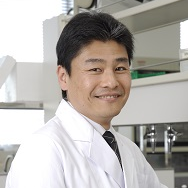Anthocyanins: Recent Progress in Health Benefits Studies
A special issue of Molecules (ISSN 1420-3049). This special issue belongs to the section "Natural Products Chemistry".
Deadline for manuscript submissions: closed (30 September 2019) | Viewed by 76886
Special Issue Editors
Interests: anthocyanins; curcumin; diabetes; obesity; glucagon-like peptide-1; beige cells; brown-like adipocytes
Interests: anthocyanins; berries; blueberries; bioavailability; bioactivity; flavonoids; health
Special Issue Information
Dear Colleagues,
“Anthocyanins”, belonging to the group flavonoids, are plant pigments that may appear to be red or purple and are present in the form of glycosides. Efforts have been made to identify genes for anthocyanin synthesis in plants and elucidate the regulatory pathways for gene expression. In addition, stabilization and extraction processes of anthocyanins from plant sources have been developed to use in food pigments. Despite research progress in plant biochemistry and the utilization of food pigments, the role of anthocyanins as a functional food factor remains relatively less established than other flavonoids. However, anthocyanins and anthocyanin-rich berries’ health-related functions have been conducted such as anti-arteriosclerosis, anti-obesity, anti-diabetes, brain function-enhancing, and the improvement of visual and vascular functions in the last 20 years. These favorable functions are not explained by their antioxidant properties alone, and thus anthocyanins are received as functional food factors with “beyond antioxidant” functions. Also, resent studies that have been shown metabolites of anthocyanins may have a significant impact on various health benefits.
In this Special Issue, resent research advances in health benefit studies in anthocyanins including anthocyanin-rich berries and related foods in cells, animals, and humans will be invited. Studies on molecular mechanisms, absorption and metabolism, effects on intestinal flora, and epidemiology are also welcome.
Prof. Takanori Tsuda
Dr. Wilhelmina Kalt
Guest Editors
Manuscript Submission Information
Manuscripts should be submitted online at www.mdpi.com by registering and logging in to this website. Once you are registered, click here to go to the submission form. Manuscripts can be submitted until the deadline. All submissions that pass pre-check are peer-reviewed. Accepted papers will be published continuously in the journal (as soon as accepted) and will be listed together on the special issue website. Research articles, review articles as well as short communications are invited. For planned papers, a title and short abstract (about 100 words) can be sent to the Editorial Office for announcement on this website.
Submitted manuscripts should not have been published previously, nor be under consideration for publication elsewhere (except conference proceedings papers). All manuscripts are thoroughly refereed through a single-blind peer-review process. A guide for authors and other relevant information for submission of manuscripts is available on the Instructions for Authors page. Molecules is an international peer-reviewed open access semimonthly journal published by MDPI.
Please visit the Instructions for Authors page before submitting a manuscript. The Article Processing Charge (APC) for publication in this open access journal is 2700 CHF (Swiss Francs). Submitted papers should be well formatted and use good English. Authors may use MDPI's English editing service prior to publication or during author revisions.
Keywords
- Anthocyanins
- Berries
- Flavonoids
- Absorption
- Metabolism
- Intestinal flora
- Obesity
- Diabetes
- Atherosclerosis
- Cardiovascular disease
- Brain function
- Athorosclerosis







